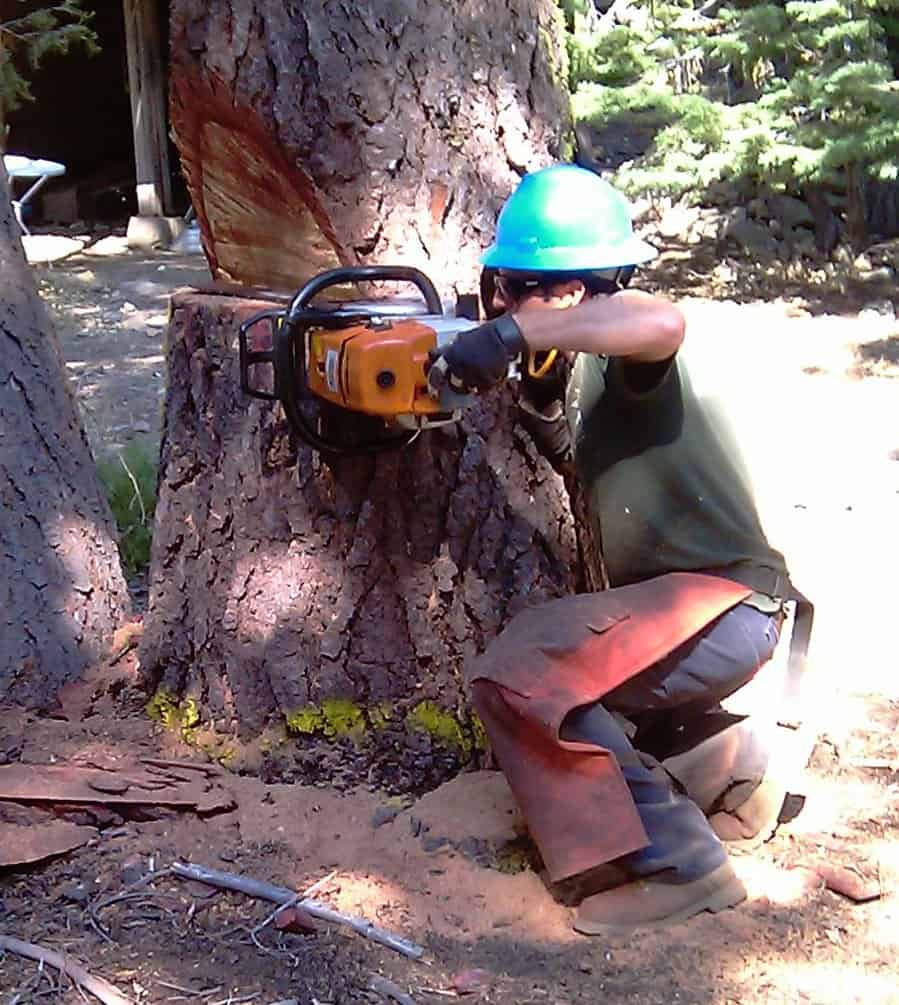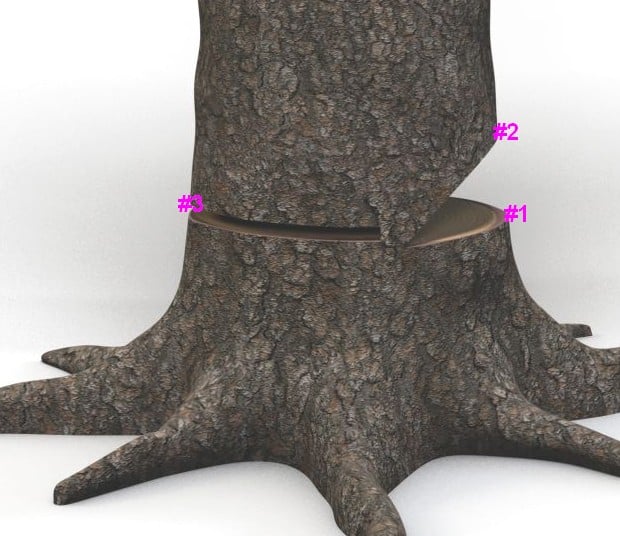Didn't get the interview so back to cutting firewood...
eapls2708, post: 450718, member: 589 wrote: I don't think that Scott understands that in much of NW WA, if you are going to traverse to avoid trees rather than cut them down, that you might end up with several hundred 15' to 20' traverse legs ...
I once worked for a surveyor in NW Washington that did a lot of contract work for LP. Traversing sections and marking out the boundaries for logging. I don't recall that he even owned a chain saw. We never cut down trees except small ones with the machete. But we only ever "cut line" enough to get a few photons of light through. Average traverse legs were in the 200' - 300' range. We'd do a section in about 3-4 field days.
rfc, post: 450750, member: 8882 wrote: Find a logger (preferably a friend, but that's not critical), and spend a day in the woods cutting trees with him.
You can read everything written here (all good advice), times ten, and you won't learn what you will probably learn in one day with someone who knows what they're doing and is willing to share some of it with you.
Reposting the best advice of the thread.
Too bad about the interview that wasn't. Still a good idea to get this into your skill set while you continue looking.
Rankin_File, post: 450768, member: 101 wrote: "That's gonna leave a mark" is usually an understatement with chainsaws.... and chicks dig scares...
http://www.bchw.org/Tech tips/SawCertification/Chain Saw Injuries.htm
[SARCASM]Thanks RF. I'll probably be skipping dinner tonight.[/SARCASM]
Just remember: Chain saws don't cut.....they remove
Licensed Land Surveyor
Finger Lakes Region, Upstate New York
rfc, post: 450750, member: 8882 wrote: Find a logger (preferably a friend, but that's not critical), and spend a day in the woods cutting trees with him.
You can read everything written here (all good advice), times ten, and you won't learn what you will probably learn in one day with someone who knows what they're doing and is willing to share some of it with you.
Best of the best.
If you're serious about acquiring the skill (besides asking yourself why), spend more time than that. I see a lot of guys that posted take their inate understanding of physics for granted, and not everyone has that.
If your intelligence prevails, don't be disappointed in yourself. It is inherently dangerous.
The chainsaw is the second most dangerous tool that we use (second only to the Truck/Car/Van).
It (like the truck) REQUIRES 100% attention at all times (while running). It can hurt you when the engine is off, but nothing like what it can do (directly or indirectly), when the engine is running (just like the truck).
Like many have said above, get GOOD training, work your way up (baby steps), and never take the thing for granted. Take you eyes "off the road" for a split second, and all hell can break loose before you know it.
Good luck, and enjoy.
Loyal
Find the muffler before you start it....
I ran one for the first time today, briefly.
"Only ask questions that you know the answers to" immediately made sense..
I had been cutting 8 footers with a handsaw during fire restrictions; we cut all those to stove size today. Maybe four cords.
After we stacked all the firewood I got a lesson in how to take apart, clean, and sharpen the saw. Needs a new bar and new chain.
After you nick the ground, or a rock, or cut dirty logs, you will see how fast it dulls it.
I really dislike a dull chain.
And, for a beginner, i DO recomend a small saw. And frequent breaks. Fatigue is real.
I've cut myself 2x. In the same place. Only a flesh wound. But, chainsaws cut flesh better than logs.
N
half bubble, post: 450656, member: 175 wrote: I'm being offered the loan of a Stihl with a twenty inch blade ... And some chaps.
I have a McCullough saw that I bought new in 1983. My number one rule is Never loan your saw to anyone. That is how you keep a saw 34 years. I will cut whatever they need cut but I will not loan them my saw. But that has nothing to do with safe efficient use of a saw.
My only advice for using a saw is to practice with a log on the ground first. Many logs on the ground. Next would be to get an expert to show you the proper way of hinging a tree and using a wedge cut to make a tree fall the way you want. I will often use a framing square to see the direction perpendicular to the hinge. This video covers much of it.
One thing that it does not cover is cutting your hinge in a triangle shape to overcome a tree that wants to go left or right of where you want it to go. It is easy to understand if you see it done. It is hard to explain in written words.
James
Nate The Surveyor, post: 451086, member: 291 wrote: . Only a flesh wound.
Only? As opposed to bone or organs? Cripes, you are tough.
imaudigger, post: 451235, member: 7286 wrote: Little known feature found on most chain saws (falling sights)....leave the carpenter tools at home next time and give it a try.
I saw that in the Husqvarna video and had to go look. Mine is 34 years old but it does have a line cast into the aluminum housing for doing that. I have also never seen someone leave the outer portion of the back-cut for last. Learn something new every day.
I have yet to find a good explanation with pictures or sketches of cutting a hinge in a triangle shape to better hold a tree against gravity when laying a tree down almost perpendicular to the lean.
James
[MEDIA=youtube]rScMZ7McTd0[/MEDIA]
JaRo, post: 451242, member: 292 wrote: I saw that in the Husqvarna video and had to go look. Mine is 34 years old but it does have a line cast into the aluminum housing for doing that. I have also never seen someone leave the outer portion of the back-cut for last. Learn something new every day.
I have yet to find a good explanation with pictures or sketches of cutting a hinge in a triangle shape to better hold a tree against gravity when laying a tree down almost perpendicular to the lean.
James
I think he was just posing to demonstrate using the falling sights and he had already made his first two cuts.
I have found that you can steer the tree a little when it's falling by cutting a little bit more of the hinge (#3 cut) on one side or the other.
Is that the triangle you are talking about (the hinge)?
I have found that most evergreen trees fall directly perpendicular to the first cut. Big bushy trees heavy with limbs is a different story.
FrozenNorth, post: 450749, member: 10219 wrote: You shouldn't ever cut through a tree when felling. Leave hinge wood between the face and back cuts. This hinge wood gives you directional control and also allows for the use of wedges (in the back cut) to make the tree see things your way. It also makes unpredictable behavior less likely when the tree starts to "go".
As a long time timber feller I would advise otherwise. As the tree tips and has its momentum headed where the hinge has directed it, it is actually important to stay with the stump and clear the hingewood off before the undercut closes. This will prevent the tree from barber-chairing. Barber-chairs kill. The other advantage is that it eliminates stump pullage/splintering. This is important for maximum lumber production and adds greatly to the mill's bottom line.
imaudigger, post: 450679, member: 7286 wrote: ...
Well running chain saws are meant to be operated at full throttle or nearly full throttle. ..
Only when operated underload
imaudigger, post: 451283, member: 7286 wrote: .
In this picture, the face cut is upside down from that of a what a true timberfeller would cut. The face cut should be an undercut with the slant being downward not upward. Plus the back cut is best aligned perfectly with the horizontal cut of the face cut. This will result in a nice square log end which is optimal for lumber production.
Skeeter1996, post: 450665, member: 9224 wrote: ........ Clearing line is much more dangerous than falling trees. .......
I'd have to disagree. I personally know quite a few dead timberfellers.






